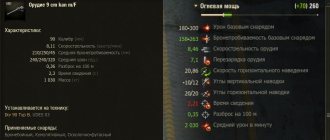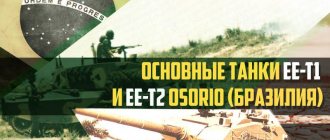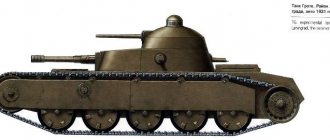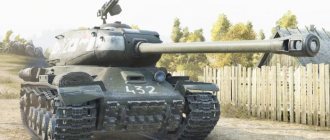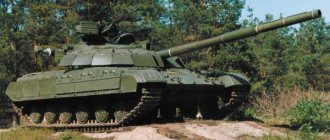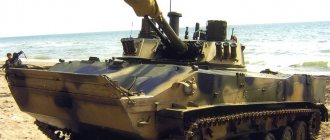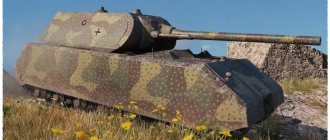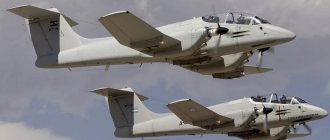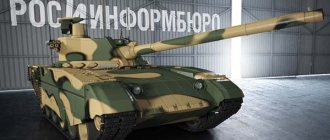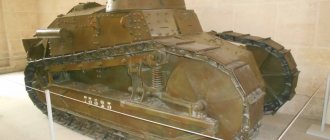Tank C1 Ariete TTX. Video. Photo. Speed. Engine
Ariete what it is - Italian main battle tank. Developed in 1984 based on the German Leopard 2 tank, the first prototype was built in 1986. Mass-produced from 1995 to 2002. The total production was 200 units. In 2005, an improved version of the tank was presented as a prototype: reinforced modular armor and a 55-caliber gun.
History of creation
In 1982, a discussion arose in Italy regarding future armored fighting vehicles. For two of them - a multi-purpose wheeled combat vehicle (the future "wheeled tank" B1 "Centauro" ) and a tracked infantry fighting vehicle (the future VCC-80 "Dardo") - there was no doubt: we will do it ourselves! But the fate of the main battle tank raised questions. There was an opinion in military circles that the best choice would be to adopt the Leopard 2 tank. The creation of the OF-40 was not considered a serious argument, since this tank belonged to the previous generation.
The development of a new generation tank was accompanied by great technical risk - the military was not sure that the industry would be able to create a tank that would meet modern requirements. The “Gordian knot” was cut in 1984, when the Italian Ministry of Defense officially announced that the Leopard 2 tank would not be adopted by the country’s ground forces. This marked the start of the development of our own main battle tank, called the C1 Ariete. The interpretation of this name is ambiguous: on the one hand, it is “Aries,” the name of the constellation. On the other hand, “Ram”, but not in the zoological sense, but in the military sense: this term refers to a ram. The development of the tank was undertaken by a proven tandem - a consortium and OTO Melara, known as CIO (Consorzio Iveco OTO Melara). In accordance with the cooperation system that developed during the creation of the OF-40, Iveco-Fiat was responsible for the chassis and power plant, and OTO Melara was responsible for the weapons and fire control system.
According to the new requirements, the tank had to have a mass of no more than 50 tons, be armed with a 120-mm smoothbore gun with a stabilization system, and have a modern fire control system that would ensure round-the-clock combat use. In terms of mobility and security, the Italian car should not have been inferior to Leopard 2. In addition, it was necessary to ensure a sufficient volume of the fighting compartment for comfortable work of the crew and the necessary reserves for further upgrades.
One of the prototypes of the S1 tank
For testing, five (according to other sources - six) Ariete prototypes were made. The first of them was ready in January 1987, and in March of the same year it was officially presented to high-ranking officials and the press. By the end of 1988, all prototypes were made. The work was carried out quickly, and the Ministry of Defense expected that already in 1990 or 1991 the first production Arietes would leave the factory floor. However, the deadlines gradually shifted: first to 1993, and then to 1995. At the same time, in the wake of the reduction in the military budget that followed the end of the Cold War, the volume of the potential order for the C1 was melting away: instead of the 700 tanks planned in the late 80s, only 200 were produced. Attempts to sell the tank to a number of Asian countries, as well as to Greece and Spain were unsuccessful.
Tank C1 Ariete - video
Design work on the new 3rd generation main battle tank C1 Ariete, originally named OF-45, began in 1984. An indispensable condition of the order was the installation of a 120-mm gun, unified in terms of ammunition range with other NATO MBTs.
During R&D, the experience of German tank builders was actively used, and in the final version of the new MBT, the strong influence of the German Leopard-2 and the American M1 is felt. It was planned to use some devices and subsystems made in Germany.
By 1988, she had prepared 6 prototypes with minor differences and a somewhat simplified design in comparison with the serial tank, and submitted them for state tests, which passed quite satisfactorily. At this point, the new MBT received the designation S-1 (C="Carro", Italian for "tank") and the name "Ariete" ("Battering Ram") in memory of the 1st Tank Division during the Second World War. Initially, the country's government order was estimated at 400-500 units, but in 1992 it amounted to only 200 vehicles. By 1996, the Italian army received all the ordered tanks, designed to finally replace the M47 and replenish the tank divisions where the M60 and Leopard will continue to serve.
Design
The layout of the S-1 Ariete is classic and almost exactly repeats the Leopard-2: the control compartment (driver’s seat) has been moved to the starboard side. The driver's seat is hydraulically adjustable. In front of the hatch there are 3 prismatic monitoring devices, the middle of which can be replaced with a passive NVD MES VG/DIL 100. Behind the driver's seat there is an emergency hatch. The turret is centered along the hull, and contains workplaces for the remaining crew members: the commander (on the right side of the turret), the gunner (on the left side) and the loader. The engine and transmission compartment is located in the stern. The hull and turret are welded, with frontal parts made of composite armor and located at large angles of inclination. The sides of the hull and the chassis are protected by anti-cumulative screens.
Armament of the C1 Ariete tank
The main armament of the tank is a 120-mm L44 smoothbore gun with a 44-caliber barrel length, stabilized in two planes, developed by OTO Melara based on the German Rh-120 and visually distinguished by a more compact ejector. The gun is equipped with a traditional thermal insulating casing. The barrel is strengthened by autofrettage, has a heat-protected casing and ejection purge. The shutter is vertical. To align the sight, a collimator is used, installed outside the barrel near the muzzle. The initial speed of armor-piercing sabot shells when firing this gun is estimated at 1650 m/s or more; In terms of ballistics, the gun differs little from its German prototype. The elevation angles of the trunk are from -9 to +20 degrees.
The full ammunition load is 42 rounds of unitary loading, of which 27 are stored in the housing to the left of the driver’s workplace, 15 ready - in the turret niche, behind the armored partition. Standard NATO ammunition of American and German production can be used, including M829 and its modifications (USA), DM-23, DM-33 (Germany) and others, standard STANAG-4385. Initially, German shells were used, but since 2001 - Israeli shells. Italian company SNIA, in the early 90s. prepared its own shots (BPS and KS), but they were not accepted for service. Combat rate of fire is 5-7 rpm, after the first stage ammo is used up, the rate of fire drops to 2-3 rpm. “Knockout” panels are mounted above the ammunition rack in the roof of the turret, and in the left wall of the turret there is a hatch for replenishing ammunition and ejecting spent cartridges. Gun pointing angles in the vertical plane are from -9″ to +20″. The turret rotation and gun pointing drives, used by the gunner and commander, are electro-hydraulic with manual override.
The Ariete's auxiliary armament consists of two 7.62-mm machine guns, one of which is coaxial, the second is mounted above the commander's hatch in a spring-balanced cradle, which allows for quick "transfer" of the weapon in the horizontal plane and aiming it in the range of angles from - 9″ to +65″ vertically and can be used as an anti-aircraft gun. The prototypes were equipped with the American M2 Browning machine gun, while production models were equipped with the German MG3. Ammunition for machine guns in the amount of 2000 rounds is stored in the fighting compartment. There are four smoke grenade launchers on the sides of the tower.
The pride of the vehicle’s creators is the TURMS OG-14 L3 fire control system, developed and unified with the Dardo BMP and Centauro BKM fire control system. The control system includes a computerized navigation system, an MP501 tank ballistic computer, wind, roll, trim sensors, a stabilized gunner's day sight with 5x magnification, which has a built-in laser rangefinder and thermal imager, a panoramic commander's observation device SFIM SP-T-694 with variable 2 , 5- and 10-fold zoom, an independent rangefinder post and, on tanks of recent years of production, a personal commander’s thermal imager, as well as an alignment device, control panels for the commander, gunner and loader.
For all-round visibility, 8 periscopes are installed at the commander’s workplace. Its main sight has variable magnification (x2.5 and x10); when operating at night, the thermal imaging image from the gunner's sight is transmitted to a special commander's monitor. Together with the French company SFIM, a sight mounted on the roof of the tank has been developed, the head of which can be rotated in the horizontal plane by 360″ and in the vertical plane from -10° to +60″, while the commander’s head remains practically motionless.
The gunner's sight consists of 4 main modules: a head stabilized mirror, an optical visual channel, a laser rangefinder and a thermal imaging channel. The head of the sight is protected by an armored cap, the flaps of which open left and right. The day channel has a 5x magnification, the thermal imaging channel has wide and narrow fields of view. As an auxiliary weapon, the gunner has a Galileo Avionica C-102 telescopic sight with 8x magnification.
The electronic ballistic computer provides calculation of all data for firing and is used for training, checking the technical condition of various systems, as well as changing the configuration of the control system - setting it to emergency mode in the event of failure of any elements. Sensors for meteorological conditions and side winds are located on the roof of the tower.
In terms of security level, the C1 Ariete is practically not inferior to other MBTs of the North Atlantic Alliance. The tank's turret is welded, wedge-shaped in plan, with a developed aft niche. The front plates are installed at a large angle of inclination and have a combined multi-layer “chobham” type armor. The equivalent armor thickness of the frontal part is estimated at approximately 550-650 mm against kinetic projectiles and up to 700 mm against cumulative projectiles. Between the tower and the hull there is a small “zaman”. It is possible to increase the armor using applied modules.
The steep side walls of the tower are protected much less, up to 150 mm of homogeneous armor. They are weakened by the presence of holes (under the hatch for ejecting cartridges and under the FVU). The rear plate armor is even thinner, although the turret spare parts basket provides some additional protection. The roof of the tower is partially covered with a layer of anti-radiation lining; in its rear part there are two double-leaf ejection panels that ensure the combustion of shots without turning into detonation. An armored partition is also installed between it and the fighting compartment. An anti-fragmentation Kevlar lining is placed inside the turret.
The welded body is very similar in outline to Leopard-2. The prototypes differed from the serial C1 Ariete in their slightly different shape (in the MTO area). The frontal armor of the hull (the central frontal part) is also made in several layers, and its protection is approximately equivalent to that of the turret. The lower frontal part, side and rear have weak single-layer armor. Additional protection against small cumulative ammunition (PG, etc.) is provided by reinforced rubber screens (6 sections). On prototype tanks, steel boxes were installed instead of two front screens.
The survivability of the vehicle in real combat is increased due to the laser irradiation warning system (until recently rare on Western MBTs), combined with the Galix universal grenade launcher. The launchers are mounted on the side plates of the tower - 4 per side. The entrenching tool is also hung there. The chassis of the tank differs little from the Leopard-2, where it has successfully proven itself. It includes 7 dual medium-diameter road wheels with external rubber coating on a torsion bar suspension and 4 support rollers. Hydraulic shock absorbers are installed on the first, second, third, sixth and seventh suspension units. The drive wheel is rear-mounted. The track chain consists of approximately 90 tracks with parallel joints and an increased bearing surface. The caterpillar, manufactured by Dielil, has a parallel type RMS and removable rubber cushions.
The power plant of the tank is a 12-cylinder diesel engine MTCA 12V developed by Fiat-Iveco with a power of 1200 hp. s., providing the machine with a specific power of 22 hp. s./t and maximum speed when driving on the highway is 65 km/h. The engine is turbocharged and the cooling system is water. In order to reduce the infrared radiation of the tank, the exhaust gases are cooled in two heat exchangers before being released into the atmosphere. A short-term boost of up to 1300 hp is possible. With. The transmission of the ZF LSG 3000 model is automatic, hydromechanical, providing 4 forward gears and 2 reverse gears.
Along with mechanical disc brakes, the transmission contains a hydraulic retarder, which absorbs up to 75% of braking energy. If the hydraulic system fails, the second gear of forward or reverse may be mechanically engaged. The engine and transmission are made in one unit, which greatly facilitates their replacement in the field. The C1 Ariete tank is equipped with the SP-180 WMD protection system from Sekur. When overcoming contaminated areas of terrain, excess pressure is created in the fighting compartment. In order to increase survivability, the vehicle has an automatic NPO system, the elements of which are installed in all compartments. For communication, a radio station with two whip antennas at the rear of the tower and a tank intercom are used.
Production of the C1 Ariete has ended. The Italian army is armed with 200 C1 Ariete tanks. These combat vehicles are equipped with 4-. 32nd and 132nd regiments (54 tanks each) of the Ariete tank brigade and training units. Ariete tanks practically did not take a serious part in real combat operations. At the moment, the presence of these MBTs is known in the zone of several military conflicts. The first one dates back to 1999-2001. — the time of the NATO operation in Yugoslavia on the territory of the Autonomous Province of Kosovo.
In August 2004, six C1 Ariete tanks were sent to Iraq as part of the Italian contingent. Before shipping, the vehicles underwent modifications aimed at increasing the level of fire protection of man-portable anti-tank weapons (ATGM, RPG). The front part and sides of the turret, as well as the sides of the hull, are reinforced with elements of applied armor. A second MG3 machine gun is installed on the turret and both machine guns are covered with shields.
I do not know how effective and reliable the Italian MBTs turned out to be in comparison with the American M1A2 and the British Challenger 2 in the specific conditions of the Middle East.
This MBT was not supplied to the armies of other countries in the world. Although it was exhibited at a number of arms and military equipment exhibitions (in particular, at IDEX and Eurosatori), the OTO Melara consortium did not find buyers. The lack of proper reputation among Italian companies, slightly lower performance in relation to leading competitors - M1 and Leopard-2, combined with a rather high price (about $ 5 million) forced potential buyers to opt for other MBTs.
The strengths and weaknesses of the S-1 should also be analyzed, as well as further prospects for the development of the design. The Ariete concept reflected almost all the advantages and disadvantages inherent in Western tank building. The advantages over Russian-made main battle tanks lie in advanced surveillance devices and control system equipment (the presence of a panoramic CT surveillance device, a thermal imager with a higher resolution, etc.), and increased crew survivability. We can talk about more powerful protection only in comparison with Russian MBTs of outdated models (although the frontal armor of the turret and hull, apparently, is not penetrated by 1st and 2nd generation ATGMs such as “Malyutka”, “Fagot”, “Konkurs”, guided missiles "Cobra" and "Reflex" (except for "Reflex-M"), many Russian armor-piercing projectiles - 3BM12, 3BM15, 3BM22, possibly 3BM42). In turn, large dimensions and weight, the lack of additional protection systems against ammunition with cumulative warheads (for example, dynamic protection or electronic suppression systems) are the most obvious negative features, which, however, are characteristic of most MBTs in the Western world. If we talk about the specific defects of the Ariete, then we should point out slightly worse indicators of mobility and armor than, for example, that of the Leopard-2A5 (due, among other things, to the rather irrational design of the turret, the large slope of the frontal armor of which reduces efficiency of ceramic armor materials, and the hull - with a significant area of minimally protected NLD and the roof of the control compartment). But, of course, already at the development stage, opportunities for modernization were laid down, and now the moment has come for their implementation.
At the Eurosatori 2002 exhibition, the Ariete Mk.2 (or S-2) was demonstrated for the first time. Work on an improved modification of the tank has been ongoing since the early 90s, but financial restrictions and changes in the foreign policy situation slowed down the pace of design. The control system and power plant have been improved (due to a 1600-horsepower diesel engine), the hydraulic turret drive has been replaced with an electric one. The forehead and partly the side of the turret and hull are additionally protected by elements of overhead armor, and thus, the maximum thickness of the armor in a homogeneous equivalent has increased to approximately 650-700 mm against the BPS. According to production plans drawn up during the launch of the basic model into series, the army order for an improved version could amount to 500 units. Currently, the question of the number of Ariete Mk.2 has not yet been finally resolved. Alternative ways to modernize Ariete include several possible directions. First of all, it is desirable to develop the tank’s weapon system, and the Leopard-2A6 can serve as a role model. Its gun with a 44-caliber barrel length was replaced by an improved version with a 52-caliber barrel length, which made it possible to increase the initial speed of the armor-piercing projectile to 1800 (or more) m/s. Such an innovation will not have a negative impact on the other characteristics of the machine. In the distant future, the possibility of rearming the S-1 with a new 140 mm gun cannot be ruled out, but this project requires careful verification.
One of the most pressing tasks facing NATO military designers remains equipping MBTs with automatic loaders. The problem of the technical design of the AZ is one of the most difficult. Perhaps the automatic loading mechanism that will be equipped with the Ariete will become an analogue of the AZ of the French Leclerc MBT - with mechanized stowage under part of the ammunition in the turret niche, with unitary loading.
Finally, an important aspect of the evolution of the model is the increase in levels of protection against high-precision anti-tank weapons using active protection systems or optical-electronic countermeasures. It is feasible mainly through licensed production.
It is worth noting that various units and subsystems designed specifically for the Ariete can find wide application on other combat vehicles - and, in principle, have already found it. About the design of the control system and its unification on most of the family of Italian armored vehicles of the 90s. said above. As for other devices, the 120-mm tank gun, after a number of modifications, including the installation of additional recoil mechanisms and a cylindrical perforated muzzle brake, became the main weapon of the new modification of the four-axle all-wheel drive Centauro armored vehicle instead of the 105-mm rifled gun. This option, according to many military experts, is the most powerful wheeled tank destroyer of all those currently existing.
Service
Delivery of all 200 ordered C1 Ariete tanks was completed in 2002. Naturally, this number was not enough to replace Leopards 1 in a 1:1 ratio, but this was not required due to the significant reduction in the number of Italian ground forces. Currently, the Ariete is the only main battle tank in service with the Italian Army.
Four tank regiments are equipped with C1 tanks. The staff of the tank regiment provides for the presence of three companies of 13 tanks each, as well as 2 tanks in command. Thus, the regiment has 41 tanks, and in four regiments across the state there are 164 Ariete tanks. The remaining vehicles are used at the school of tank forces in Lecce, and are also in reserve.
In 2016, the Ariete platoon from the 132nd Tank Regiment participated in the Strong Europe Tank Challenge at the Grafenwoehr training ground (Germany)
In 2016, the Ariete platoon from the 132nd Tank Regiment participated in the Strong Europe Tank Challenge at the Grafenwoehr training ground (Germany)
Two of the four tank regiments (32nd and 132nd) are part of the Ariete tank brigade, located in the northeast of the country near the border with Slovenia. The 31st Regiment is part of the Pinerolo mechanized brigade, and the 4th is part of the Garibaldi Bersaglieri Brigade, stationed in the Campania region.
B1 Centauro armored vehicle and C1 Ariete tank (with an additional armor kit installed) in Iraq
Although the Italian armed forces have been actively involved in operations outside the country in recent decades, Ariete tanks have not found use in them. The only “war trip” was the sending of six S1s from the 32nd Tank Regiment to Iraq to participate in Operation Ancient Babylon. The vehicles received additional armor, but never took part in battles.
In 2002, the C2 tank project was presented at the Eurosatori exhibition. It was supposed to differ from the base model with a new engine with a power of 1500-1600 hp. with an electronic control system, hydropneumatic suspension, a new weapons control system and other improvements. As an option, it was proposed to equip the tank with an automatic loader (reducing the crew to three people) and use a gun with a longer barrel. It was assumed that if a positive decision was made on the implementation of this project, the C2 tanks would replace the C1 in 2015-2020. The reality turned out to be different - due to a lack of funds, the army has to be content with only very limited improvements to the existing C1s, which mainly affected communications equipment.
In 2014, plans were announced to reduce the Ariete fleet to 120 units with deep modernization of 50 of them. The subsequent aggravation of the military-political situation in Europe forced the Italian leadership to reconsider its decision, abandoning the reduction. Moreover, in 2022, the first tranche (35 million euros) was allocated for the development of the Ariete II tank. It is expected that the program to create a new tank will cost 1 billion euros, and the delivery of 200 Ariete IIs to replace the C1 tanks will be carried out by 2028.
Performance characteristics of the C1 Ariete
Crew, people: 4 Years of production: 1995—2002 Number of production, pcs.: 200 Layout: classic
Weight C1 Ariete
— 54 tons
Dimensions C1 Ariete
— Hull length, mm: 7590 — Length with gun forward, mm: 9670 — Hull width, mm: 3600 — Height, mm: 2500 — Ground clearance, mm: 440
Armor C1 Ariete
— Type of armor: steel and combined, projectile-proof
Armament
— Caliber and brand of gun: 120-mm OTO Melara — Type of gun: smoothbore — Barrel length, calibers: 44 — Gun ammunition: 42 — Sights: combined periscopic Galileo with thermal imaging channel and laser rangefinder Salenia MTL8, panoramic binocular SP stabilized in two planes -T-694 — Machine guns: 2 × 7.62 mm MG3 — Other weapons: 2 × 66 mm smoke grenade launchers
Engine C1 Ariete
— Engine type: V-12 MTCA — Engine power, l. p.: 1275
Speed C1 Ariete
— Speed on the highway, km/h: 65 — Cruising range on the highway, km: 550 — Specific power, l. s./t: 23.6 — Suspension type: individual torsion bar — Specific ground pressure, kg/cm²: 0.9 — Climbable grade, degrees: 30 — Climbable wall, m: 1.0 — Climbable ditch, m: 3.0 — Fordability, m: 1.2 (4.0 with OPVT)
Operators[edit]
Ariete training in Qatar
Ariete during exercise
Each tank battalion has four tank companies of thirteen Arietes each and two Arietes for the battalion commander and his deputy.
- Italian Army - 200 [6] Bersaglieri Brigade "Garibaldi" 4th Tank Regiment (31st Tank Battalion "MO Andreani") in Persano
- 32nd Tank Regiment (3rd Tank Battalion "MO Galas") in Tauriano.
Links[edit]
- Haskew, Michael (2015). Tank: 100 Years of the World's Most Important Armored Military Vehicle
. Zenit Press. ISBN 978-0760349632. - ^ ab "MBT C1 Ariete". militarypedia
. October 15, 2015 - https://www.aerosekur.com/ Archived December 9, 2011 at the Wayback Machine Aero Sekur
- "OBT ARIETE - page 1". Archived from the original on November 6, 2007. Retrieved November 3, 2007.
- "OBT ARIETE - page 2". ferrimol
. - "Programme e Prospettive Future". Esercito Italiano
. Italian Army. Retrieved November 17, 2022.
